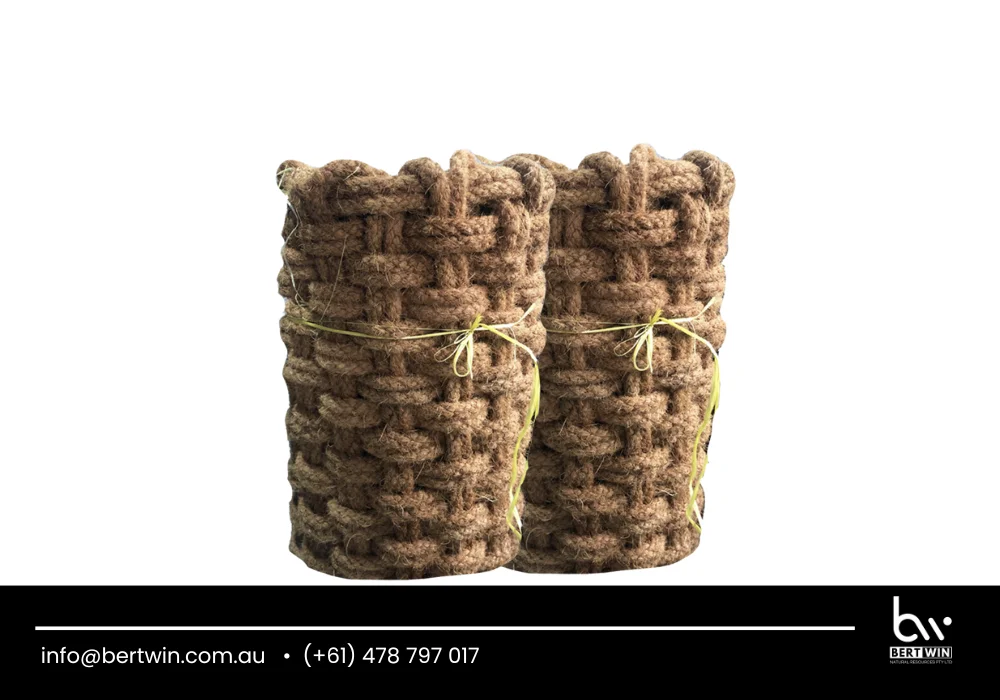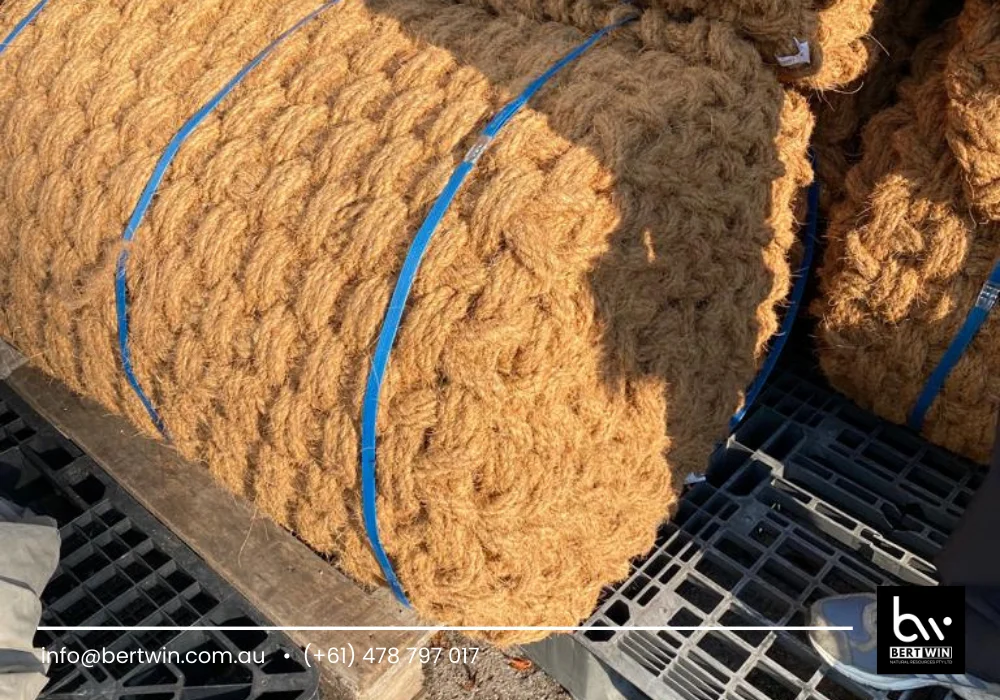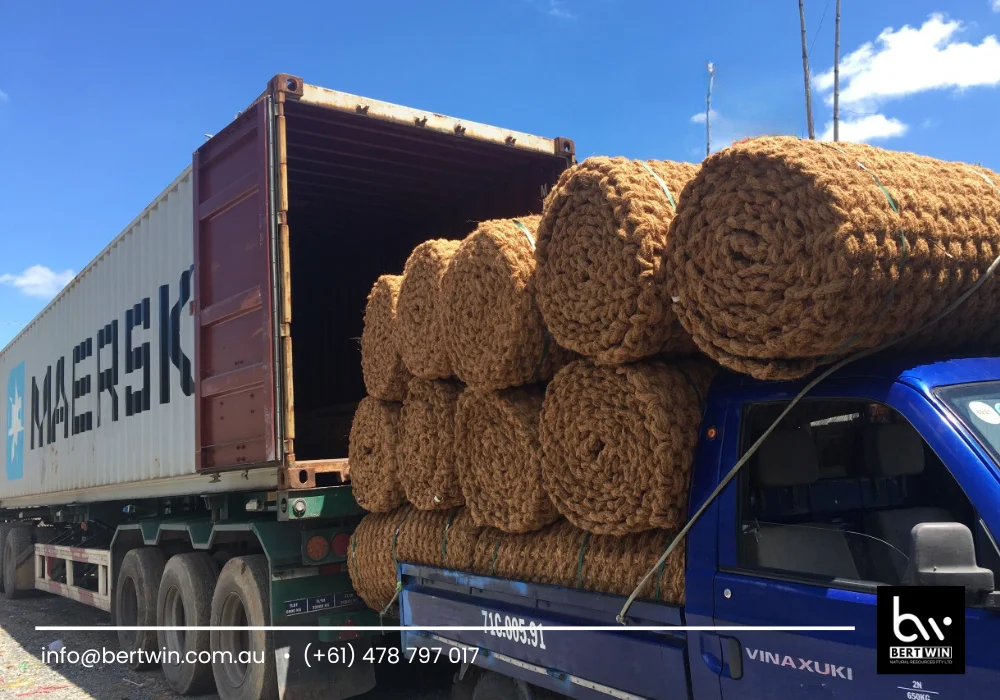
Choosing the right size coir mat for plants is essential for healthy growth. Coir mats, also known as coconut matting, made from natural coconut husk fibers, have been used for centuries in gardening and agriculture. These mats offer excellent drainage and aeration, making them perfect for plant roots. Selecting the correct size coir mat for plants ensures your plants get the support they need while preventing overwatering. Whether you’re starting a small herb garden or a larger landscape project, understanding different sizes of coir mats can enhance your gardening experience. Dive into the benefits and tips for choosing the ideal size coir mat for plants to fit your green space.
Benefits of Coir Mats
Soil Retention
Using the appropriate size coir mat for plants helps with soil retention. The unique structure of coir fibers holds soil in place, preventing erosion and keeping the ground stable. This is especially useful on slopes or areas prone to erosion, where using a well-sized coir mat can provide a strong foundation for your plants.
Moisture Management
Moisture management is another key benefit of the correct size coir mat for plants. These mats absorb water well, keeping the soil moist. They release moisture slowly, which helps plants during dry spells. A gram coir mat, made from natural coconut husk fibers, retains up to 30% more water than traditional materials. This quality makes coconut fibers, also known as natural coconut husk fibers, ideal for gardens in hot climates.
Plant Health Support
Coir mats support plant health significantly. They provide a natural environment for roots to grow. The biodegradable coir fiber, also known as coconut fibers, breaks down over time, enriching the soil with nutrients. Natural coconut husk fibers also promote healthy root development. Using coco mats made of coir fibers, natural coconut husk fibers, can lead to stronger plants with better yields.
Choosing the Right Size
Factors to Consider
Selecting the right size coir mat for plants is essential for plant health. Space availability plays a significant role. Measure the area where the mat will sit. This ensures it fits perfectly in your garden or pot.
The type of plants also matters. Larger plants need bigger mats for support. Smaller plants can thrive with smaller mats. Also, consider the growth stage of your plants. Young seedlings may require smaller mats, while mature plants benefit from larger size coir mat for plants.
Different Plant Types
Different plant types have unique needs. For example, succulents and cacti prefer smaller coir mats. They don’t require much space for their roots. On the other hand, larger plants like ferns or fruit trees, need a more generous size coir mat for plants to accommodate their root systems.
Herbs and vegetables often thrive with medium-sized mats. These provide enough room for growth while maintaining moisture levels.
Gardening Applications
Coir mats serve various gardening applications. They can be used in pots, raised beds, or directly on soil. For potted plants, choose the correct size coir mat for plants that fully covers the pot base. This helps retain moisture and prevents soil erosion.
In raised beds, larger coir mats can cover more area, providing better insulation for roots. Using coco mats directly on soil can help suppress weeds and improve soil quality.

Installation Tips
Preparing the Area
Start by cutting slopes to prepare the area. This ensures proper drainage for your plants. Remove any debris or old mats from the site. The ground should be level and free from rocks. Soil compaction is important, so tamp down any loose soil.
Next, measure the area where you will lay the coir mat. Make sure it fits well in the designated space. This helps prevent future issues with water pooling or plant growth.
Laying the Mat
Once the area is ready, position the coir mat and coco mats carefully. Lay it over the prepared ground without stretching it too much. Ensure it covers all areas where you want to support plant growth.
If needed, fill slopes with additional soil before laying the coco mats. This provides a stable base for your plants. Adjust the mat as necessary to ensure complete coverage.
Securing the Mat
After laying the mat, secure it in place. Use landscape staples or stakes to hold down the edges. This prevents wind or rain from moving it around.
Check that there are no gaps between the mat and the soil. Fill any spaces with soil or mulch to help retain moisture. Regularly inspect the mat after installation to ensure it remains secure and effective.
Maintenance Practices
Regular Inspection
Inspecting coir mats regularly is crucial. Look for signs of wear or damage. Check for mold or mildew growth, especially in damp conditions. Catching these issues early can save money and time. Inspect the edges for fraying or peeling. This helps maintain the mat’s appearance and functionality.
Cleaning Techniques
Cleaning coir mats is simple yet important. Use a vacuum to remove dirt and debris. For deeper cleaning, shake the mat outside to dislodge trapped particles. A mild soap solution works well for stains. Scrub gently with a soft brush. Rinse thoroughly and let it dry completely before placing it back.
Repair Methods
Repairing coir mats can extend their life. If you notice small tears, use a strong adhesive to fix them. For larger damages, patching with extra coir fibers is effective. Cut a piece from an old mat and glue it over the damaged area. This method keeps your mat functional without needing a replacement.

Final Remarks
Coir mats are a game-changer for your plants. They offer excellent drainage, help retain moisture, and provide a natural habitat for beneficial microbes. Choosing the right size ensures your plants thrive, while proper installation and maintenance keep them looking great.
Don’t overlook these simple yet effective tools in your gardening arsenal. Invest in coir mats to elevate your plant care routine. Start exploring options today and watch your greenery flourish like never before!
Frequently Asked Questions
What are coir mats made of?
Coir mats are made from natural coconut fibers. These fibers are durable, biodegradable, and provide excellent moisture retention for plants.
How do I choose the right size coir mat for plants?
Measure your plant pots or garden beds before purchasing. Ensure the mat covers the entire base to maximize water retention and prevent weeds.
Can coir mats be reused?
Yes, coir mats can be reused several times. After each use, clean them thoroughly and allow them to dry before reapplying.
Do coir mats help with weed control?
Absolutely! Coir mats suppress weed growth by blocking sunlight while allowing water and nutrients to reach the soil.
How often should I replace my coir mat?
Typically, coir mats last 1-2 years. Replace them when they show signs of wear or degradation to maintain effectiveness.
Are coir mats suitable for all types of plants?
Yes, coir mats are suitable for various plants, including indoor and outdoor varieties. They enhance moisture retention and support healthy growth.
Where can I buy coir mats?
You can find coir mats at garden centers, home improvement stores, or online retailers specializing in gardening supplies. Look for quality products for the best results.
In conclusion, if you are eager to delve deeper into the details of coir products, feel free to explore our website at www.bertwin.com.au. Additionally, for direct and instant connection with our team, you can reach us through the following WhatsApp link here. We look forward to providing you with the information and assistance you need.
